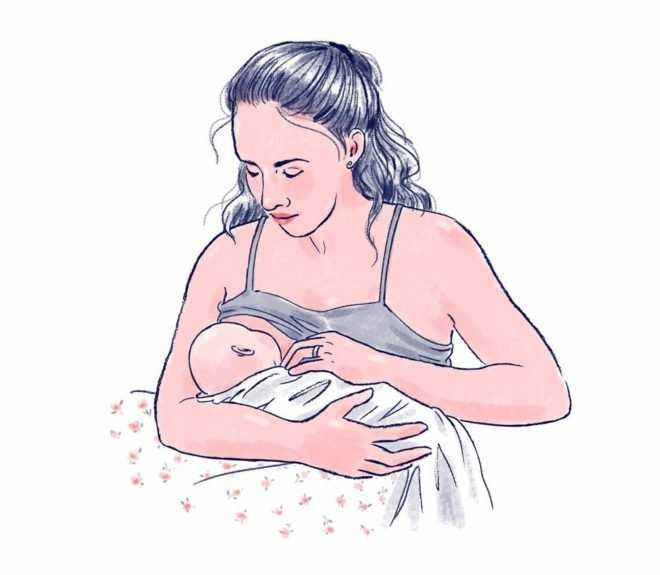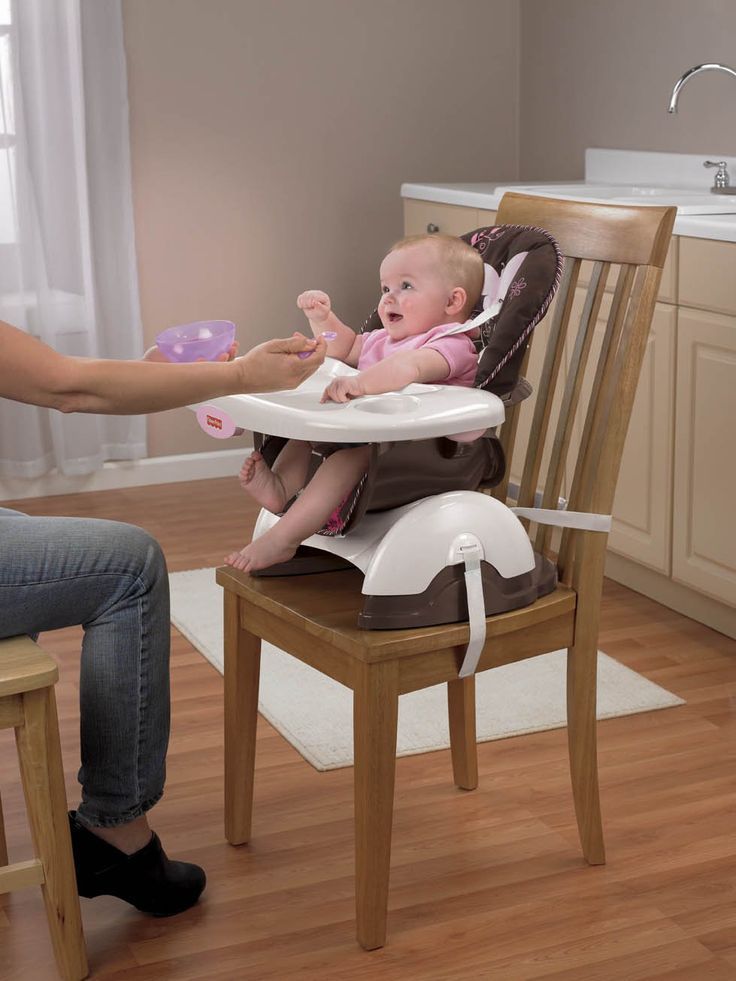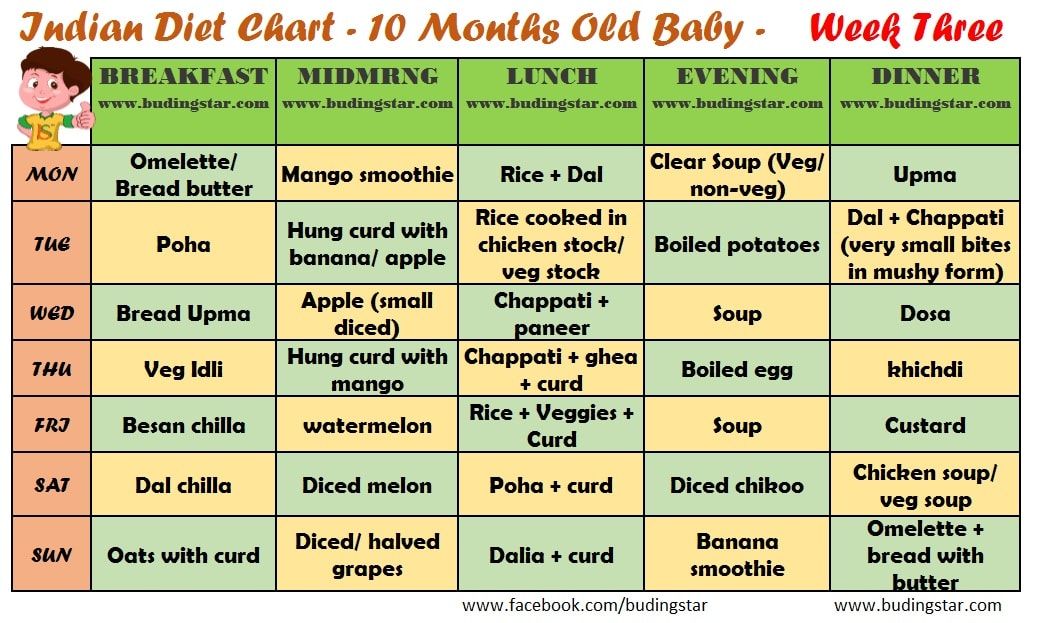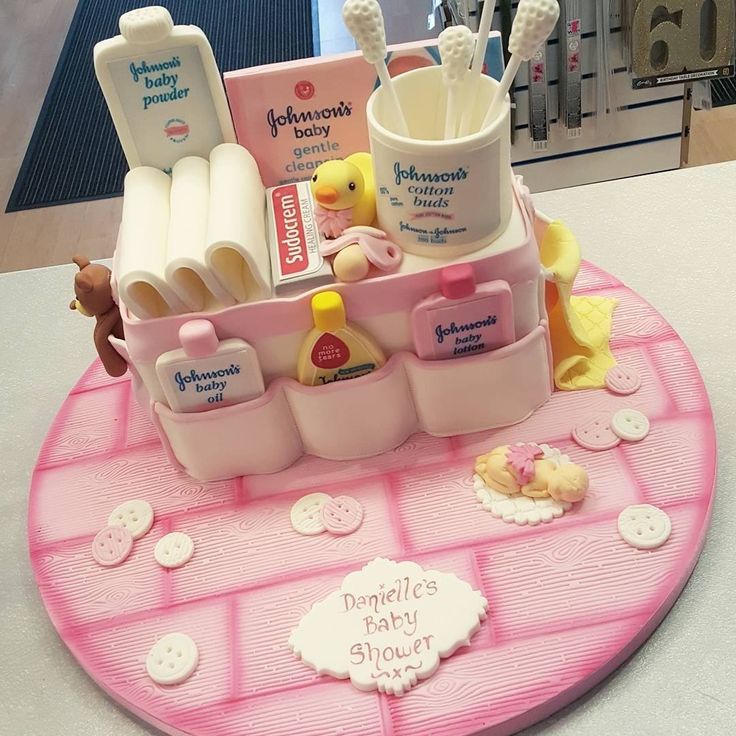Ladies feeding baby
Breastfeeding FAQs: How Much and How Often (for Parents)
Breastfeeding is a natural thing to do, but it still comes with its fair share of questions. Here's what you need to know about how often and how long to breastfeed your baby.
How Often Should I Breastfeed?
Newborn babies should breastfeed 8–12 times per day for about the first month. Breast milk is easily digested, so newborns are hungry often. Frequent feedings helps stimulate your milk production during the first few weeks.
By the time your baby is 1–2 months old, he or she probably will nurse 7–9 times a day.
In the first few weeks of life, breastfeeding should be "on demand" (when your baby is hungry), which is about every 1-1/2 to 3 hours. As newborns get older, they'll nurse less often, and may have a more predictable schedule. Some might feed every 90 minutes, whereas others might go 2–3 hours between feedings.
Newborns should not go more than about 4 hours without feeding, even overnight.
How Do I Count the Time Between Feedings?
Count the length of time between feedings from the time your baby begins to nurse (rather than at the end) to when your little one starts nursing again. In other words, when your doctor asks how often your baby is feeding, you can say "about every 2 hours" if your first feeding started at 6 a.m., the next feeding was around 8 a.m., then 10 a.m., and so on.
Especially at first, you might feel like you're nursing around the clock, which is normal. Soon enough, your baby will go longer between feedings.
How Long Does Nursing Take?
Newborns may nurse for up to 20 minutes or longer on one or both breasts. As babies get older and more skilled at breastfeeding, they may take about 5–10 minutes on each side.
How long it takes to breastfeed depends on you, your baby, and other things, such as whether:
- your milk supply has come in (this usually happens 2–5 days after birth)
- your let-down reflex (which causes milk to flow from the nipple) happens right away or after a few minutes into a feeding
- your milk flow is slow or fast
- the baby has a good latch, taking in as much as possible of your areola (the dark circle of skin around your nipple)
- your baby begins gulping right away or takes it slow
- your baby is sleepy or distracted
Call your doctor if you're worried that your baby's feedings seem too short or too long.
When Should I Alternate Breasts?
Alternate breasts and try to give each one the same amount of nursing time throughout the day. This helps to keep up your milk supply in both breasts and prevents painful engorgement (when your breasts overfill with milk).
You may switch breasts in the middle of each feeding and then alternate which breast you offer first for each feeding. Can't remember where your baby last nursed? It can help to attach a reminder — like a safety pin or small ribbon — to your bra strap so you'll know which breast your baby last nursed on. Then, start with that breast at the next feeding. Or, keep a notebook handy or use a breastfeeding app to keep track of how your baby feeds.
Your baby may like switching breasts at each feeding or prefer to nurse just on one side. If so, then offer the other breast at the next feeding. Do whatever works best and is the most comfortable for you and your baby.
How Often Should I Burp My Baby During Feedings?
After your baby finishes on one side, try burping before switching breasts. Sometimes, the movement alone can be enough to cause a baby to burp.
Sometimes, the movement alone can be enough to cause a baby to burp.
Some infants need more burping, others less, and it can vary from feeding to feeding.
If your baby spits up a lot, try burping more often. While it's normal for infants to "spit up" a small amount after eating or during burping, a baby should not vomit after feeding. If your baby throws up all or most of a feeding, there could be a problem that needs medical care. If you're worried that your baby is spitting up too much, call your doctor.
Why Is My Baby Hungrier Than Usual?
When babies go through a period of rapid growth (called a growth spurt), they want to eat more than usual. These can happen at any time. But in the early months, growth spurts often happen when a baby is:
- 7–14 days old
- 2 months old
- 4 months old
- 6 months old
During these times and whenever your baby seems extra hungry, follow your little one's hunger cues. You may need to breastfeed more often for a while.
How Long Should I Breastfeed My Baby?
Experts recommend that babies be breastfed exclusively (without formula, water, juice, non–breast milk, or food) for the first 6 months. Then, they recommend continuing to breastfeed for 2 years (and beyond) if it works for you and your baby. Any length of time your baby can be breastfed is beneficial.
Breastfeeding has many benefits for mom and baby both. Studies show that it can lessen a baby's chances of diarrhea, ear infections, and bacterial meningitis, or make symptoms less severe. Breastfeeding also may protect children from sudden infant death syndrome (SIDS), diabetes, obesity, and asthma.
For moms, breastfeeding burns calories and helps shrink the uterus. In fact, breastfeeding moms might return to their pre–pregnancy shape and weight quicker. Breastfeeding also helps lower a woman's risk of diseases like:
- breast cancer
- high blood pressure
- diabetes
- heart disease
It also might help protect moms from uterine cancer and ovarian cancer.
Breastfeeding FAQs: Getting Your Baby to Latch (for Parents)
Breastfeeding is natural, but it takes practice to get it right. Here's what you need to know about getting a good latch, making sure your baby is drinking, ending a nursing session, and more.
How Do I Get My Baby to Latch Correctly?
Find a quiet spot to sit, and support yourself with pillows, a footstool, or whatever you need to feel comfortable. Choose a nursing position that feels good. When you and your baby are ready, follow these steps:
Make a "nipple sandwich." Hold your breast with your hand, and compress it to make a "nipple sandwich." An easy way to remember how to hold your hand: Keep your thumb by your baby's nose and your fingers by the chin. (The thumb and fingers should be back far enough so that your baby has enough of the nipple and areola — the darker circle of skin around the nipple — to latch onto.) Compressing your breast this way lets your baby get a deep latch. Your baby's head should lean back slightly, so their chin is touching your breast.
Your baby's head should lean back slightly, so their chin is touching your breast.
Get your baby to open wide. Touch or rub your nipple on the skin between your baby's nose and lips. When this happens, your baby should open wide (like a yawn) with the tongue down.
Bring your baby to the breast. When your baby's mouth is open wide, quickly bring your baby to your breast (not your breast to your baby). Your baby should take as much of the areola into the mouth as possible. Your baby's nose should almost touch your breast (not press against it) and their lips should be turned out ("flanged").
When your baby is properly latched on, you may have a few moments of discomfort at first. After that, it should feel like a tug when your baby is sucking.
To make sure you're doing it right, it helps to be observed by someone who knows a lot about breastfeeding, like a lactation consultant.
What Is Let-Down?
The let-down reflex, or milk-ejection reflex, is a pins-and-needles feeling or tingling you may feel in your breasts just after your baby starts to suck. Milk may seep from the other breast.
The let-down reflex happens when your baby's sucking (or a breast pump pumping) triggers nerves in the nipple. The nerves send a message to your brain telling it to release milk. The brain releases a hormone called oxytocin that causes tiny muscles in the breast to tighten and squeeze the milk out, or "let it down."
Oxytocin also can make you feel cramps in your uterus when your milk lets down. This is helpful in getting your uterus back to its original size.
Let-down also can happen if a feeding is overdue or before you start nursing (you may also have let-down from simply seeing your baby or hearing a baby cry). Or it can happen after your baby is latched on and has sucked a few times. Some women have many let-downs during a single feeding.
Some women never have a feeling of let-down, which is OK too. Even if you don't feel it, you should still see milk coming from your nipple and hear and see your baby swallowing.
Even if you don't feel it, you should still see milk coming from your nipple and hear and see your baby swallowing.
How Can I Tell if My Baby Is Drinking?
You can tell that your baby is drinking by seeing movement along the lower jaw or in your baby's ear and temple.
At the beginning of a feed, babies tend to suck quickly. Then, during let-down, you may hear your baby gulping. This may sound like little clicks.
Toward the end of a feed, babies slow down. Your breasts may feel softer and you will notice that your baby's hands and shoulders are more relaxed.
Will My Baby Release the Breast When Finished?
Most babies will release the breast on their own. If your baby doesn't, and the sucks now seem limited to the front of the mouth, break the suction. Do this by slipping your finger in the side of your baby's mouth (between the gums) and turn your finger a quarter turn to break the seal.
Try to burp your baby and then switch to the other breast.
How Can I Tell if My Baby Is Latched on Wrong?
If your baby latches on wrong, it will probably be uncomfortable to breastfeed. Some moms say it's painful or feels like a pinch as their babies nurse.
Babies who latch on wrong tend to fall asleep often at the breast and may not seem satisfied after a feed if they aren't getting enough milk.
If you think your baby is latched on wrong, break the suction. Then, reposition your baby onto your breast to include the nipple and areola. If you still feel pain even after repositioning, talk to your doctor or lactation consultant to make sure your baby is latched well (or that something else isn't going on).
Always call your doctor if you can't nurse without pain, or if your baby:
- keeps falling asleep at the breast
- is nursing but doesn't seem satisfied when feedings are over
- does not gain weight as expected, or does not produce as many wet and soiled diapers as usual (about 6 wet and 4 poopy diapers per day at first)
It's not about advertising mixtures.
 Why women decide not to breastfeed
Why women decide not to breastfeed In the State Duma, in the first reading, a law was passed banning the advertising of breast milk substitutes. According to the author of the bill, advertising is one of the most important factors that lead to the refusal of breastfeeding. Our blogger, mother of three children Lyudmila Chirkova, disagrees with this position.
I believe that if a woman decides to stop breastfeeding, she does not need any advertising - she will just go to the store and buy a mixture that her pediatrician will recommend to her or that her friends or the Internet will advise. It seems to me that it is more logical to make sure that women do not refuse to breastfeed. And for that, you need to understand the reasons that lead to the rejection of HB (breastfeeding).
1. It hurts
It is only in the paintings of the Raphaelites and other Renaissance artists that a woman breastfeeding a baby looks like Madonna. She is fresh and beautiful, always with a smile on her lips. In real life, things are not so rosy. Breastfeeding is, of course, a natural process. But this does not mean that it can be quickly adjusted. What is the right capture worth!
In real life, things are not so rosy. Breastfeeding is, of course, a natural process. But this does not mean that it can be quickly adjusted. What is the right capture worth!
Add to this a heavy huge breast that falls on a woman with pain, a tearing sensation from the rush of milk, soreness when touched and a permanent desire to quickly drain all this property at least somewhere. And the baby still can't grasp the breast.
What can be done : at least train nurses in maternity hospitals to speak politely and kindly to new mothers, to show how and what works. In an ideal world, every maternity hospital should have a breastfeeding support unit and breastfeeding consultants. But I understand that this is still an unrealistic utopia.
2. It's hard
Feeding at night is hard. Even if you practice co-sleeping and the child is at your side. After feeding every night for 2-3 weeks, the mother realizes that she can no longer - she has no strength and she wants to sleep. But during the day, you still have to play with the child, walk, change the diaper, cook dinner, wash the floors, and further down the list. At this moment, the mixture seems to be a salvation: I gave a bottle and sleep peacefully all night.
But during the day, you still have to play with the child, walk, change the diaper, cook dinner, wash the floors, and further down the list. At this moment, the mixture seems to be a salvation: I gave a bottle and sleep peacefully all night.
And no heaviness in the chest, if you suddenly missed a feeding! You don't have to remember which breast you gave the last time, and which one to give now. Paradise, and only!
What can be done : Make available helpers for mom. The same nannies who take a walk during the day while mom is sleeping. It is important to educate men who are still, let's be honest, rarely included in the "baby care" program, and even more so - in a series of endless household chores.
Not sure where to start? Take as an example the system in Taiwan, where fathers are entitled to a month's leave after the birth of a child, so that the whole family (not just the mother) can get used to the new role. This is an important 40 days for a woman's recovery after childbirth. Remember that it's hard to survive baby blues alone. Sometimes impossible.
Remember that it's hard to survive baby blues alone. Sometimes impossible.
3. Feeling bound
A breastfeeding mother feels bound hand and foot. She is the source of food for the child. And anyway, she's a mother! Who, besides her, will cope with this? Or rather, rarely anyone wants to cope. Naturally, a child on GV is some kind of strange beast for the older generation and for fathers who have no idea which side to approach him from (it’s good that there are fewer and fewer such fathers). Previously, you put a pacifier in and rest, but this one asks for a breast, spits out a pacifier.
After a couple of months of severe social isolation, when you cannot go anywhere for more than an hour without a child, many people give up. This is a completely new life, it is not easy to get used to it. And everyone can give a bottle to a child: diluted, warmed up and free.
What can be done : see previous point. A baby up to 6 months old needs warm, gentle hands. It doesn't matter whose they will be: moms, dads, grandparents. And milk can always be expressed and given from the same bottle. The industry of baby products does not stand still, now there are special bottles for breast milk, after which the child will not refuse breastfeeding.
It doesn't matter whose they will be: moms, dads, grandparents. And milk can always be expressed and given from the same bottle. The industry of baby products does not stand still, now there are special bottles for breast milk, after which the child will not refuse breastfeeding.
4. I am a bad mother
Mothers (this is how all women with children in polyclinics and kindergartens are derogatoryly and endearingly called) are extremely vulnerable beings, especially in the first year of a child's life. Especially if the child is the first.
Is the child not gaining weight well? It's all my mother's fault, she has "empty milk", more like a mixture. Does the baby have a stomachache? Yes, this is mommy who does not follow a diet (seriously? diet?). There are very few specialists who share the policy of promoting natural feeding. And there are a lot of those who are sure that after a year the child does not need breastfeeding: "Here, his teeth have already erupted - let's meat, and not stick your boob. "
"
Persistent mothers of 2-3 children can easily filter it all out, experience and laugh. But for those who are faced with all this for the first time, it is more difficult. A meeting with another such specialist may lead to the end of the GW.
What can be done : give doctors a proper education? On the one hand, they are required to confirm their qualifications every year, pass certification, attend lectures, and be aware of the latest research. But in the real world, this is not always the case. And not everywhere. It is not clear how to monitor this and how to weed out doctors, if there are already not enough of them. The system seems to be there, but it is not. Or it works very selectively.
5. We have to work
Nurseries and formula appeared and began to be actively promoted during the period when a woman went to work immediately after the end of her maternity leave - after the prescribed 70 days after giving birth. Now in Russia, of course, there is 1. 5 years of childcare (even 3!). But at work, few people are ready to wait for an employee for such a long time, and it is almost impossible to live on a child care allowance. A woman has to go to work if she has the opportunity to leave her child with someone.
5 years of childcare (even 3!). But at work, few people are ready to wait for an employee for such a long time, and it is almost impossible to live on a child care allowance. A woman has to go to work if she has the opportunity to leave her child with someone.
Maintaining lactation without being near a child is work worse than work. You need to pump every two hours so that the milk does not disappear. And where to do it? Are there many companies in the country where there are places for nursing mothers, where they will go to a meeting and shorten the working day, give a break? So it turns out: you earn and feed with mixtures or sit at home, breastfeed and be content with a miserable allowance on the brink of survival. So-so choice.
What can be done : increase child care benefits to a significant amount so that it is an amount that you can actually live on. Oblige companies to comply with the Labor Code and monitor this. Develop additional measures of social support for families with small children - affordable nannies, corporate kindergartens (for buns from the state in the form of tax deductions, benefits), a fixed price for children's goods, like medicines from the list of vital ones. You can fantasize indefinitely. But all this needs to be done - and it is difficult, you need to invest money. It's easier to ban ads.
You can fantasize indefinitely. But all this needs to be done - and it is difficult, you need to invest money. It's easier to ban ads.
6. Shaming
Imagine that a mother coped with all of the above, improved feeding, she is mobile, cheerful and cheerful, she has the strength to go out with her child. But she is not welcome. Babies, in fact, rarely cause tenderness in anyone. Through one, you can, if not hear, then see condemning looks, they say, where are you with such a little one?
If you try to breastfeed your baby in a cafe, a museum, a shopping center, you run the risk of being scolded verbally by an outraged public. Even if you are in a sling, nursing clothes and no one can see anything. The very fact that you dared to feed a child in public is annoying. Natural process? Yes, what are you saying! Not here please! Go to the toilet, to the other end of the shopping center, to a nook proudly called the "nursing room", hide on the farthest bench in the park so that no one sees how children grow up and how they are fed.
What can be done : it is pointless to educate society. There will always be those who think that breastfeeding is shameful. But the development of infrastructure for families with children could make the life of nursing mothers much easier. Large children's stores with a feeding room, feeding rooms in hypermarkets (not one room for the entire shopping center! At least a couple on each floor, without the notorious code and a call confirming your intentions to the camera).
It is impossible to change all people. But if lectures and trainings were given to those who work in the service sector on how to behave with parents with children, they explained that there is no need to depreciate, it would be easier for breastfeeding women.
There is a lot that can be done to support breastfeeding. But all this requires money, resources and the participation of living people. It is much easier to ban advertising of mixtures, which are sometimes indispensable even for those who advocate breastfeeding and feed, overcoming pain, fatigue and sidelong glances. There are different situations. It would be nice to remember this. Sometimes the mixture can save a life.
There are different situations. It would be nice to remember this. Sometimes the mixture can save a life.
You are in the "Blogs" section. The opinion of the author may not coincide with the position of the editors.
Photo: Olena Chukhil / shutterstock
They stole children and passed on diseases: who were nurses and how did they live until the 20th century? his mother leads an active social life. Such a "profession" existed not only in the Russian Empire - and somewhere it was quite prestigious, but somewhere - real slavery.
Where it all began: nurses as a necessity
Mayan nurse and ancient Egyptian pharaoh Tutankhamun. Image from Maia's tomb, 14th century BC. e. Photo: Wikimedia Commons In ancient times, when infant mortality was incredibly high, breast milk was especially highly valued: it greatly increased the chances of children to survive. Therefore, if the mother died or could not feed the child, people used the services of wet nurses. In ancient Egypt, nurses came to the richest families. These girls were held in high esteem, they were often invited to social events. In ancient Greece, such a position was considered more prestigious than the position of a slave. The inhabitants of the Roman Empire made written contracts with nurses. There was the following scheme in use: rich couples gave shelter to abandoned babies in order to subsequently receive free slave power. Some of the slaves were appointed as nurses, and she took care of the orphan.
In ancient Egypt, nurses came to the richest families. These girls were held in high esteem, they were often invited to social events. In ancient Greece, such a position was considered more prestigious than the position of a slave. The inhabitants of the Roman Empire made written contracts with nurses. There was the following scheme in use: rich couples gave shelter to abandoned babies in order to subsequently receive free slave power. Some of the slaves were appointed as nurses, and she took care of the orphan.
Wealthy families usually used the services of a breadwinner. Even if there were no problems with lactation, noble women did not want to breastfeed their children, because this would prevent them from wearing fashionable clothes or attending social events. Royal families could hire several nurses at once - this was the case, for example, with the Romanov family. The nurse usually could not take care of her children (and a woman who breastfeeds, by definition, has them, and these are also babies): she did not have enough time and strength.
Stealing children and spreading diseases: hatred of nurses
The future King Louis XIV in the arms of his nurse. Photo: Wikimedia CommonsIn the Middle Ages, the opinion was strengthened that magical qualities are transmitted to the baby with mother's milk, the process of feeding one's own child received a sacred meaning. Mothers who did not want to feed their children received public condemnation, they were treated with disdain even by their own husbands.
At the same time, the nurses were also condemned. For example, if a grown-up child had any diseases or unpleasant character traits, it was the nurses who were blamed for everything. The French pediatrician of the 17th century, Jacques Guillemot, in his works urged people to refuse their services. From his point of view, the nurse could replace the child, give him a disease or "imperfections of her own body." He also worried that if the baby got used to the breasts of another woman, then his relationship with his mother would worsen.
Guillemot also believed that red-haired girls should be banned from being nurses: red hair at that time symbolized a daring, unpleasant character, which supposedly could be transmitted to a newborn.
Does not have sex and is not nervous: the image of the ideal nurse
Bureau of wet nurses in Paris, 1822. Photo: Wikimedia Commons / Wellcome Collection / CC BY 4.0Not every woman could become a nurse; representatives of this profession have always had a number of requirements. Since ancient times, doctors have tried to develop "tests" to understand whether a girl is suitable for feeding a baby. It was believed that milk from an evil nurse leads to illness or death of a child, so parents were looking for women with a calm character.
Nurses were forbidden to marry, have sex, become pregnant or simply become sexually aroused: there was an opinion that this spoiled the milk. Girls were forced to follow a diet, and fines were issued for violations. Many pediatricians even performed medical examinations on a wet nurse's children to evaluate her milk. If the children were healthy, the wet nurse was considered "fit".
If the children were healthy, the wet nurse was considered "fit".
The ideal nurse of the 19th century:
- Girl 20–35 years old
- Without menses
- Her milk is neither too thick nor too watery
- Good-natured, relaxed
- Small nipples
- Big breasted with blue veins
- With good teeth and gums
- Non-drinker, no bad habits
- Loves children
- Primiparous (preferably giving birth to a boy)
Raised 10 children of the owners, but never saw her own: slave nurses in the USA
Slave nurse, illustration of the middle of the 19th century. Photo: Wikimedia Commons Slave owners in the United States often used the services of their own women to feed their own children. Nurse slaves were not allowed to be near their own children and family, for this they were punished with a whip and forced to do additional housework. It turns out that the children of the owners received breast milk, and the native children of the slaves themselves were fed with cow and goat milk, which caused them to die and get sick. Sometimes the children of the slave nurse were given as "gifts" to the children she nursed. Later, the term "bad black mother" or "mammy" even appeared in the English language - an insulting name for slave nurses.
Sometimes the children of the slave nurse were given as "gifts" to the children she nursed. Later, the term "bad black mother" or "mammy" even appeared in the English language - an insulting name for slave nurses.
Derogatory stereotypical description of mammy:
- Large, often older woman with loud voice and vulgar features
- Illiterate
- despises his own kind
- Abandons his own children for the comfort of his owners' home
Slaves were deliberately portrayed and described as ugly as possible in order to increase inter-class hatred, as well as to hide the fact of the owners' sexual abuse of slaves. This happened quite often.
“No more nurses”: formula and the end of the profession
Painting by American artist Robert William Vonnoch “Baby Bottle”. Photo: Wikimedia Commons At the beginning of the 19th century, scientists began to develop alternative feeding methods - artificial mixtures. Demand for wet nurses gradually began to fall, although doctors still argued that breast milk was indispensable for children and other options should be resorted to only as a last resort.
Demand for wet nurses gradually began to fall, although doctors still argued that breast milk was indispensable for children and other options should be resorted to only as a last resort.
By the beginning of the 20th century, the nurse in the house had become a rarity: people began to use bottles of milk in large quantities, and the quality of mixtures improved. As bottles became more popular, doctors discouraged families from breastfeeding with an outside woman, and women's magazines increasingly featured slogans like "No more wet nurses."
"Breast is best": the rebirth of wet nurses
Expression of breast milk using a breast pump. Photo: Shutterstock / matuska After the WHO announced the need for breast milk for children for at least the first six months of life, breastfeeding has been actively discussed again. Some pediatricians began to buy milk from breastfeeding mothers and give it to children whose mothers could not or did not want to breastfeed - this is how the first cases of breast milk donation appeared.










